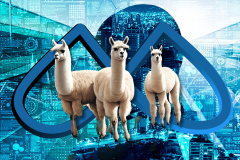Workplace engagement has become a widespread problem. Gallup’s ongoing employee engagement monitoring shows that, even today, less than 35 percent of Americans are engaged at work. In fact, a 2017 Aon Hewitt study showed that workplace engagement is declining, with some organizations experiencing “angst” amid the prediction that the decline will continue.
With half-hearted effort costing American businesses up to $605 billion per year, Isa Watson set out to help companies undo the damage they were inflicting upon themselves. Watson, the founder of workplace engagement platform Envested, noted two trends that companies are being forced to respond to: the competitive nature of the current work environment and the new way employees work within that ecosystem.
Addressing the Deep-Rooted Problems
“We’re seeing an increasingly competitive environment, where people are expected to do more with less,” Watson says. “It’s great that people are able to accomplish so much with fewer resources, but that means they also burn out more quickly.”
Watson says that her conversations with myriad organizations have revealed that most businesses struggle to strike a balance between producing affordable, high-quality work and maintaining high morale. How do you manage an increasingly competitive environment and make it productive?
While the tide had been turning for a while, businesses didn’t sit up and take notice until the impact on employees started to have an impact on them. According to the Bureau of Labor Statistics, the average employee now spends 4.6 years in a role. That figure, however, drops when we consider Millennials, the biggest segment of the workforce, who average only 3.2 years per position. This combination of disengagement and turnover has hurt companies’ productivity, increased recruiting expenses, and served as a double whammy on their bottom line.
Watson says that workplace structures, too, play a role. “Companies are becoming more matrixed, or cross-collaborative,” she explains. “People used to specialize in just one area — my dad was a computer engineer his whole life and then went on to manage other computer engineers — but it’s now more common for people to jump around an organization.”
The opportunities afforded by this flexibility are good for employees’ career paths, especially Millennials’, but they create a gap that needs to be filled. Most organizations don’t enable employees to build relationships or make adjustments to these new roles, leaving people who may very well be successful in their new roles with no connections to build upon.
And connection is huge at work: Having a best friend at work makes a person twice as likely to engage. “That fundamental need for human connection is the key,” Watson explains. “We’ve been able to do this very well in a digital format personally — a decade ago, it seemed unusual to marry someone you met online, but it’s commonplace now. We asked ourselves, ‘How do we use a digital platform to tackle the deeper human need for connection professionally?’”
Using Technology to Drive Connections
Amazon Web Services and others enabled a democratization of resources, giving fledgling startups access to the cloud and more efficient developer tools on a tight budget. This lowered barrier to entry made it easier for startups to develop more impressive software and also increased the expectations placed on those raising money.
Like the startup world, the corporate world introduced a number of productivity tools and tech resources to meet its goal of doing more with less. This fast-paced tech has advanced people’s ability to do work while simultaneously accelerating expectations. The problem is that what buyers expected and what end users expected varied wildly.
While buyers were focused on efficiency and the breadth of tools (“necessary evil”), end users were more concerned about collaboration and the depth, or quality, of the tools (“delight”). Big, bulky enterprise software solutions offered a lot of the former but little of the latter as employees had to grapple with the bulky platforms’ reduced flexibility. In response, Watson said that her team decided to focus on consumerized enterprise software (CES).
“A lot of enterprise software is designed to be one-size-fits-all,” she says, “but software that has dozens of use cases probably has two use cases making up 90 percent of its activity. As UX has improved exponentially over the past 10 years across social media and other platforms people use in their personal lives, user delight has become an expectation — and a big part of how that’s delivered is through personalization.”
Why Consumerized Enterprise Software Points to the Future
Platforms in the CES space are all driven by notifications and invitations. They’re designed to develop, and are driven by, users’ relationships. And this helps CES overcome a big problem plaguing many enterprise software packages: the time-to-value ratio. Facebook’s a master of time to value: It determined that if users made seven friends within 10 days of joining the site, it had a much higher chance of retaining them. So Facebook created a tool to suggest or request friends once an account was created, establishing value right away and significantly decreasing its time-to-value ratio.
Functionality-driven enterprise tools often aren’t this personalized because they’re trying to serve broad audiences all at once; those that focus on analytics have even higher time-to-value ratios because they’re clunky. But users have to use those tools to complete their work, so the software designers aren’t worried about losing them. For experience-driven tools built to increase collaboration and engagement with the workplace itself, however, streamlining to facilitate connections is of the essence.
While businesses got away with choosing the software that looked best on paper, ignoring employees’ fundamental needs, employees are becoming increasingly impatient and finding ways to solve their own problems. Slack’s Slackbot serves as a good example of a workaround tool created to enable collaboration when a given solution — the company’s own — didn’t meet user needs. As employees feel increasing pressure to get more done, the chances of them going outside the normal protocol — and outside the given platforms — increase as well.
That means closer listening, a function of CES, serves an important purpose. Watching what people do, rather than asking them what they want, is a given best practice in consumer technology, but it’s never taken hold in the enterprise technology sector. CES has the ability to insert specific tools — user research, data tracking and analysis, experimentation, and communication tools like Intercom — to find out from users directly what they need. This gives CES companies an advantage to bypass endless market research and implement new features more quickly than enterprise firms can. We’ve seen CES companies like Trello, Airtable, Dropbox, and others do this repeatedly and successfully.
“Personalization is a powerful tool because it builds emotional connections between the user and the technology: This tech really gets me,” Watson says. “The expectations we’ve developed and gathered as consumers have changed, and they end up being a big driver of why this CES software is appealing. It has an opportunity to disrupt the traditional enterprise software space.”
What the Future Holds
Watson believes the closer listening of CES will be a game changer, allowing companies to gather more authentic feedback. “By not focusing on the enterprise guard to the company, but the actual user of the platform, CES platforms will have many more data points about their product than they would normally. That makes the rate that the feedback comes in game-changing for the product,” she says.
With this focus, CES brands can shift from making the product better to keeping the user engaged. Their ability to endlessly experiment will build the best tools of the future, and Watson doesn’t think that fact will be lost on enterprises.
“Many traditional players have become so large that they’ve lost their experimentation, their ability to evolve their experience,” she says, “so it will become more likely that they’ll want to acquire these CES platforms. I anticipate we’ll see a lot of M&A activity between traditional players and CES firms to make the old guard more competitive.”
Envested aims to make a change in workplace engagement through a consumerized approach to software, enabling digital engagement and collaboration to influence the physical collaboration and engagement happening within offices. If CES is able to address the deep-rooted problems impacting employee retention, what’s to stop it from solving other industries’ woes?










